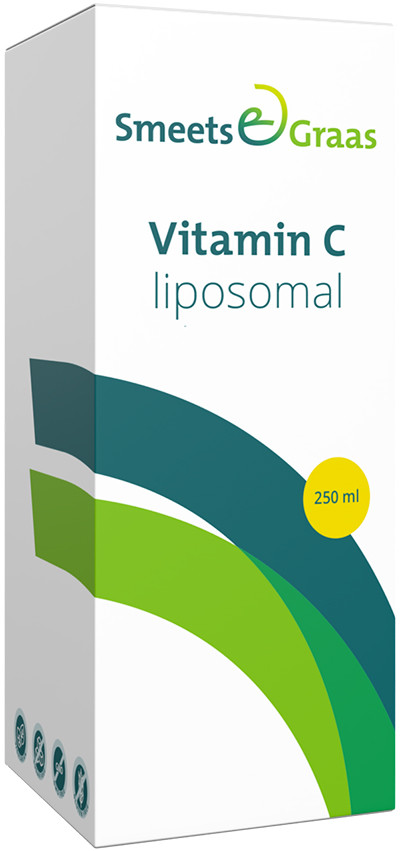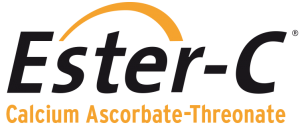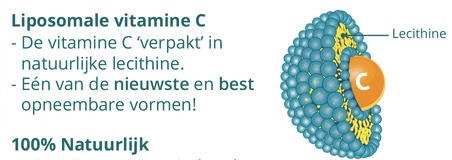
- Contains 1000 mg of vitamin C (ascorbic acid)
- Highly dosed and inexpensive

- Best absorbable liposomal form - 1000 mg
- Vitamin C in liquid form

- Calcium ascorbate threonate - 1000 mg
- Contains Ester-C®

- Vitamin C ascorbic acid - 500 mg
- With bioflavonoids

- Calcium ascorbate threonate - 1000 mg
- With rutin and bioflavonoids from citrus, acerola cherry and rose hip

- Vitamin C ascorbic acid - 1000 mg
- Highly dosed and pure

- Calcium ascorbate threonate - 500 mg
- With rutin and bioflavonoids from citrus, acerola cherry and rose hip

- Formula for the immune system
- Contains 250 mg quercetin per capsule

- Calcium/magnesium/potassium ascorbate
- Not acidic due to neutral pH value

- Contains 1500 mg of vitamin C per tablet
- With rose hip bioflavonoids

- Anti-Aging Formula
- Contains patented Hyaluronic acid and Vitamin C

- Contains 1000 mg of vitamin C per capsule, without bioflavonoids
- Easy to take due to capsule shape

- Combination of vitamins C and D
- Gummy with delicious forest fruit flavor

- Contains 1000 mg of vitamin C per tablet
- With bioflavonoids from rose hip to enhance the effect

- Contains 1000 mg of vitamin C (ascorbic acid)
- 454 gram powder per package

- Contains 1000 mg of vitamin C per tablet
- With citrus bioflavonoids, rose hip and hesperidin

- 100% natural from camu-camu and acerola

- Contains 500 mg of vitamin C per capsule
- Capsule shape facilitates intake

- Contains all B-vitamins
- Contains 250 mg vitamin C per tablet

- Vitamin C from acerola supplemented with Moringa leaf
- Organic - vegan

- Packaged per dose in 10,6 gram sachets containing 1000 mg of Ester-C® Plus
- Ester-C® is absorbed more rapidly and lingers in the body longer

- Fat-soluble form of vitamin C
- In capsules

- Contains 500 mg of camu-camu per capsule
- Highly dosed

- Formula for the immune system
- Vitamin C as magnesium and calcium ascorbate: less acidic

- Contains 1000 mg of vitamin C per tablet
- Contains 15 mg bio-quercetin phytosome per tablet

- With zinc from guava leaf and vitamin C from amla, acerola, camu camu and rose hips
- Suitable for vegetarians and vegans

- Formula for the immune system
- Comprehensive immune formula based on Ester-C®, the most effective form of vitamin C

- Vitamin C as magnesium, potassium and zinc ascorbat
- Contains high dose of non-acidic vitamin C

- Contains vitamin C in the form of Ester-C®
- With added bioflavonoids and rose hips

- Contains 1000 mg of vitamin C per tablet
- Contains 50 mg of citrus bioflavonoids per tablet
Buy the best Vitamin C here in capsules/tablets, powder, liquid or gummies. Or read more first about what vitamin C is, what it does, what the different forms are and whether we can make it ourselves:
Vitamin C must be properly absorbed

It is important that the product you buy is not delayed absorbed (slow/sustained release). This is because Vitamin C is mainly absorbed in the stomach and the first part of the small intestine.
For this reason, do not use low quality vitamin C tablets. These disintegrate very slowly, causing you to actually absorb very little of the vitamin C.
Choose a vitamin C in liquid form (liposomal), as a powder, in capsules or in high-quality tablets.
Vitamine C Infographic
Klik op de afbeelding voor de volledige infographic over vitamine C.
What does Vitamin C do?
Vitamin C (ascorbic acid), a water-soluble vitamin, is primarily important for good immunity. It also ensures healthy bones, teeth, skin and blood vessels. It ensures a properly functioning nervous system and contributes to energy supply. Vitamin C is also an antioxidant and, together with vitamin E, protects the body against free radicals. Free radicals play a role in aging processes. Vitamin C also promotes the absorption of iron.
Can our body produce vitamin C itself?
Humans cannot synthesize vitamin C themselves and depend entirely on diet for vitamin C supply. Vitamin C is water-soluble and is distributed throughout the body with the highest concentration in the adrenal and pituitary glands. However, the greatest amount of vitamin C is found in liver and skeletal muscle due to its large size in relation to the entire body.
For the production of collagen and other connective tissue molecules, vitamin C is essential. Partly for this reason, vitamin C helps keep blood vessels healthy and elastic. All the tissues that give our body structure and strength such as the joints, tendons, skin, muscles (including the heart muscle), bones and connective tissues depend on the building activity of vitamin C, especially during periods of recovery.
What is Vitamin C?
Vitamin C (Ascorbic acid) is probably the most well-known vitamin: from the 17th century onward, it was already known that weakened sailors recovered quickly after eating citrus fruits - the food on board ships on long voyages was very one-sided and not fresh - but it wasn't until the 1930s that vitamin C was truly "discovered."
In 1937, Briton Walter Norman Haworth was awarded the Nobel Prize in Chemistry for discovering the structure of vitamin C.
In the 1960s, it was another (2-time) Nobel laureate, Linus Pauling, who gave the start for orthomolecular nutrition and saw an important role for vitamin C in it.
Good sources
Good sources of vitamin C are citrus fruits, kiwis, strawberries, berries, Brussels sprouts, bell peppers, broccoli and other brassicas.
Good sources of vitamin C are citrus fruits, kiwis, strawberries, berries, Brussels sprouts, bell peppers, broccoli and other brassicas.
Bad sources
Contrary to popular belief, not all fruits are good sources of vitamin C. Apples and bananas, for example, are very poor sources. They contain only a few milligrams while one kiwi contains more than 100 mg. However, this does not mean that apples and bananas are not healthy. In fact, they contain many other healthy substances.
Can't synthesize ourselves
Virtually all animal species can self-produce (synthesize) vitamin C in their bodies but humans, great apes and a few other animals cannot. This function was lost sometime in evolution, presumably during a period of abundance of vitamin C-rich foods.
From a modern perspective, it is unfortunate that this ability has been lost: getting enough Vitamin C through the diet is not always easy, and vitamin C is really crucial for the functioning of a large number of processes throughout the body. Vitamin C is best known for its antioxidant function and its essential role in the production of collagen and other connective tissue molecules that provide the body's structure and strength.
Forms of Vitamin C
In its basic form, vitamin C consists of ascorbic acid. The word says it all: ascorbic acid is an acid (pH of 2.3) and, especially in somewhat higher doses, is not well tolerated by everyone.
Therefore, several non-acidic variants of vitamin C are available: Mineral-ascorbates, where it is bound to the minerals magnesium or calcium). And Ester-C, which is a special and patented form of calcium ascorbate that also contains substances that the body itself produces from vitamin C.
Natural forms
There is also a natural "full-spectrum" form containing not only vitamin C but also hundreds of additional plant substances derived from the tropical plants Camu camu, Amla, and Acerola. Synthetic and natural vitamin C are identical. But the big advantage of vitamin C in the form of a natural plant extract is the presence of those other substances. The most important of these are the bioflavonoids. These are active substances also found in fruits and vegetables.
Liposomal vitamin C
A relatively new form of vitamin C is that in which the ascorbic acid is surrounded by phosphatidyl lipids from lecithin. This could greatly improve absorption into cells. According to early developers, its action is similar to intravenous vitamin C. CureSupport has developed a liposomal vitamin C with much higher bioavailability to the body. The vitamin C is transported directly into the bloodstream and to the cells and in studies provides 3x higher blood levels of vitamin C.
Ascorbyl palmitate
Ascorbyl palmitate is composed of an ascorbate and a palmitic acid molecule. Soluble in both water and fat, it is widely used as an antioxidant in preserves and as a more stable form of vitamin C in a variety of cosmetic products, such as creams. The advantage of this vitamin C is that it can cross the blood-brain barrier more easily.
PureWay-C®

PureWay-C® is a clinically proven and patented form of vitamin C that contains lipid metabolites and bioflavonoids. Wholefood products containing this patented ingredient are highly bioavailable and are absorbed quickly.
Less Acidic Vitamin C Forms
For a high intake of vitamin C, ascorbic acid (the cheapest and most commonly used form of vitamin C) is not always suitable, as many people do not tolerate this acidic vitamin C as well. In addition to ascorbic acid, vitamin C is available in the (non-acidic) form of mineral ascorbates (vitamin C bound to a mineral such as calcium or magnesium) and Ester-C.
Calcium ascorbate
Calcium ascorbate is suitable for people who do not tolerate acidic ascorbic acid. Calcium ascorbate has a neutral pH and causes virtually no gastrointestinal distress. For high intake, it is best to choose a buffered or deacidified form.
Magnesium ascorbate
Magnesium ascorbate provides both vitamin C and magnesium and is suitable for people who do not tolerate acidic ascorbic acid. Magnesium ascorbate has a neutral pH.
Sodium ascorbate
Another form of buffered vitamin C is sodium ascorbate. This form is mainly administered intravenously in hospitals.
Ester-c

Ester-C is considered the third generation of vitamin C. It is a unique, patented formula that combines many of the benefits of ascorbic acid and calcium ascorbate.
Once vitamin C is absorbed into the body, it is converted, and its main metabolite is believed to be threonic acid. Ester-C is calcium ascorbate that has already been partially oxidized so the natural metabolite threonic acid is already present.
Threonic acid and its other metabolites promote the absorption and utilization of vitamin C in the body. Moreover, threonic acid appears to be able to mobilize vitamin C already stored in the body and make it available for metabolic processes. Ester-C consists of a complex of calcium ascorbate (vitamin C), with calcium bound, natural metabolites of vitamin C.

